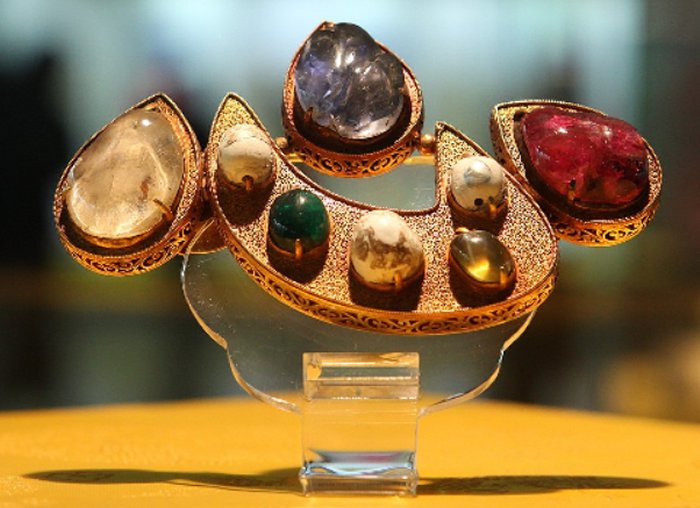Amazing Thirteen Ming Tombs: Gigantic Stone Animals And Human Figures Were Symbols Of Royal Power
A. Sutherland - AncientPages.com - The Ming Tombs ("Ming Thirteen Mausoleums") is a collection of imperial tombs of the Ming Dynasty scattered over forty square kilometers in Changping District northwest of Beijing.
They were built by the emperors of the Ming dynasty of China, all members of one family.
Of the sixteen emperors of China's Ming Dynasty (AD 1368-1644), only three were not buried with the rest (two were buried elsewhere, while the other still needs to be accounted for).
The remaining thirteen were built according to 'feng shui' (closely related to Taoism), a Chinese philosophical system of harmonizing everyone with the surrounding environment.
The first Ming emperor's tomb was built in 1409, and the last one in 1644, and it took more than two hundred years to build this necropolis.
 Top image: Watercolor overview of the Ming Tombs. Credits: United States Library of Congress's Geography & Map Division
Top image: Watercolor overview of the Ming Tombs. Credits: United States Library of Congress's Geography & Map Division
It seems that the tombs were arranged randomly, but each emperor's grave has a location meticulously chosen with precision and strategy; all this was done within 120 kilometers of the fascinating landscape.
All halls in the Ming tombs were built with nanmu, a special kind of wood (the so-called imperial timber) used frequently in China. In the Ming Dynasty, special groups were sent to dangerous, uninhabited regions of south China to collect nanmu.
Another unique building material was bricks; each with the imprinted word "longevity" weighed about 25 kilograms. One million bricks were required each year, each of good quality, solid and smooth, and emitting a clear tone when struck. The names of brick manufacturers and officials put in charge were printed on every brick for later check.
The entire impressive graveyard is located at the foot of the Tianshou Mountains, of which earlier, simple name was Huangtu (yellow earth).
Yongle died in 1424 and was the first emperor buried in this graveyard. Three tombs have been excavated and restored: Chang Ling, the largest; Ding Ling, whose underground palace is open to the public; and Shao Ling. Yongle was important in Chinese history; he moved the capital from Nanjing to Beijing after its reconstruction. Yongle's tomb gave inspiration to the building of other graves. As was the Chinese tradition, the Emperor and Empress were buried under a large mound in underground vaults. Imperial tombs were tightly sealed because emperors feared grave robbers.
One of the more impressive sights at the Ming Tombs is the Sacred Way (or Road), about seven kilometers long and flanked on both sides by carvings of human and animal figures. Twelve large stone human figures and twenty-four animals were carved from a single granite block in 1435.
This piece of jewelry was one of the most beautiful antiques excavated from the Dingling, Welcome one of the w:Ming Dynasty Tombs. It was made during the w:Ming Dynasty (1368–1644) in China, by using gold, ruby, pearl and other gemstones, and is about the size of an adult human's palm. It is of the shape of a Chinese character '?' (read Xin), which literally means heart. This photo was taken at the Dingling Museum. Image uploader: Mlogic - CC BY-SA 3.0
Interestingly, placing stone animals and human figures in front of imperial tombs can be traced back at least to the Qin Dynasty (221-206 BC.), some two thousand years ago, as each dynasty has followed this custom. However, both numbers of figures and animals varied depending on the dynasty.
In the Qing Dynasty, such stone animals as qilin, pixie (exotic animal with horns), elephants, and horses were placed in front of the tombs. In the Tang Dynasty (618-907 CE), lions, horses, oxen, blackbirds, and stone figures of civil officials and warriors were favored. In the Northern Song Dynasty (960–1279), stone animals –such as elephants, horses, sheep, tigers, lions, blackbirds, and stone figures of civil and military officials- were lined in front of imperial tombs.
Presently, the Ming Tombs are designated as one of the components of the World Heritage Site, the Imperial Tombs of the Ming and Qing Dynasties.
Written by – A. Sutherland - AncientPages.com Senior Staff Writer
Updated on Oct 20, 2023
Copyright © AncientPages.com All rights reserved. This material may not be published, broadcast, rewritten or redistributed in whole or part without the express written permission of AncientPages.com
Expand for referencesMore From Ancient Pages
-
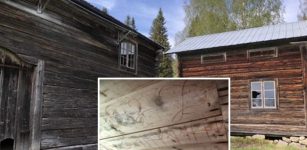 Mysterious Runes Deciphered By School Children In Sweden Shed New Light On The Kensington Stone
Artifacts | Oct 4, 2019
Mysterious Runes Deciphered By School Children In Sweden Shed New Light On The Kensington Stone
Artifacts | Oct 4, 2019 -
 Strange Ancient Artifacts And Foreigners Who Were Not Meant To Be In North America
Ancient Mysteries | Mar 16, 2020
Strange Ancient Artifacts And Foreigners Who Were Not Meant To Be In North America
Ancient Mysteries | Mar 16, 2020 -
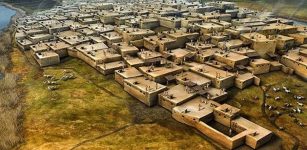 Fascinating Neolithic Society Based On Equality – Catalhoyuk, Turkey
Civilizations | Sep 18, 2015
Fascinating Neolithic Society Based On Equality – Catalhoyuk, Turkey
Civilizations | Sep 18, 2015 -
 Mount’s Bay, Lyonesse, Langarroc: Legendary Submerged Lands And Buried Towns Of Cornwall
Featured Stories | Apr 21, 2022
Mount’s Bay, Lyonesse, Langarroc: Legendary Submerged Lands And Buried Towns Of Cornwall
Featured Stories | Apr 21, 2022 -
 Halloween: Facts And History About All Hallows’ Eve And Its Connection With Samhain – An Ancient Celtic Festival
Ancient Traditions And Customs | Oct 31, 2021
Halloween: Facts And History About All Hallows’ Eve And Its Connection With Samhain – An Ancient Celtic Festival
Ancient Traditions And Customs | Oct 31, 2021 -
 Historian Suggests Jack The Ripper Fled To Australia Where He Met His End
Archaeology | Sep 10, 2016
Historian Suggests Jack The Ripper Fled To Australia Where He Met His End
Archaeology | Sep 10, 2016 -
 Secrets Of Ancient Underwater City Pavlopetri Revealed – Travel Back In Time And See What The City Looked Like!
Archaeology | Mar 1, 2014
Secrets Of Ancient Underwater City Pavlopetri Revealed – Travel Back In Time And See What The City Looked Like!
Archaeology | Mar 1, 2014 -
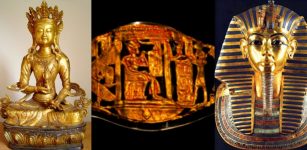 Ancient Sophisticated Technologies: Mercury-Based Gilding That We Still Can’t Reach
Ancient Technology | Aug 1, 2018
Ancient Sophisticated Technologies: Mercury-Based Gilding That We Still Can’t Reach
Ancient Technology | Aug 1, 2018 -
 Mystery Of The Hidden Wooden Hieroglyphic Tablets And The Unknown White Bearded Men – The Civilization That Died Twice – Part 2
Ancient Mysteries | Mar 6, 2021
Mystery Of The Hidden Wooden Hieroglyphic Tablets And The Unknown White Bearded Men – The Civilization That Died Twice – Part 2
Ancient Mysteries | Mar 6, 2021 -
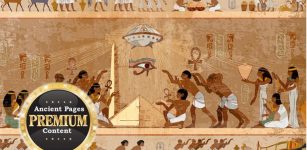 Knowledge Of Divine Alien Beings And High-Tech In Ancient Egypt Described In Sacred Books And Papyrus – The God Who Spoke About Time Dilation – Part 1
Ancient Mysteries | May 12, 2021
Knowledge Of Divine Alien Beings And High-Tech In Ancient Egypt Described In Sacred Books And Papyrus – The God Who Spoke About Time Dilation – Part 1
Ancient Mysteries | May 12, 2021 -
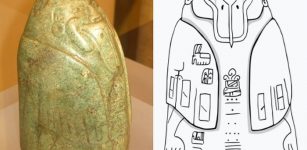 Strange Tuxtla Statuette And Its Undeciphered Inscription – An Epi-Olmec Puzzle
Artifacts | Mar 14, 2018
Strange Tuxtla Statuette And Its Undeciphered Inscription – An Epi-Olmec Puzzle
Artifacts | Mar 14, 2018 -
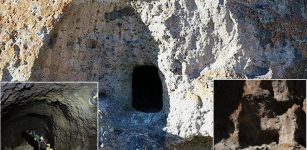 Ancient Urartu Settlement, Water Tunnel And Rock Tombs Found In Erzurum, Eastern Turkey
Archaeology | Dec 19, 2017
Ancient Urartu Settlement, Water Tunnel And Rock Tombs Found In Erzurum, Eastern Turkey
Archaeology | Dec 19, 2017 -
 Diver Says He Found Mysterious Underwater Ancient Tomb, Ruins And Artifacts Of An Unknown Advanced Civilization
Featured Stories | Oct 10, 2023
Diver Says He Found Mysterious Underwater Ancient Tomb, Ruins And Artifacts Of An Unknown Advanced Civilization
Featured Stories | Oct 10, 2023 -
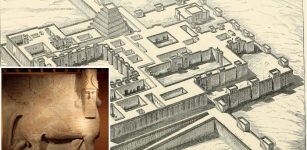 Magnetic Survey Finds Huge Previously Unknown Ancient Buildings In Abandoned Assyrian Capital Khorsabad
Archaeology | Dec 20, 2024
Magnetic Survey Finds Huge Previously Unknown Ancient Buildings In Abandoned Assyrian Capital Khorsabad
Archaeology | Dec 20, 2024 -
 Forbidden Ancient Manuscripts Almost Erased From History – Unusual Myths, Beliefs And Practices – Part 2
Ancient Mysteries | May 11, 2018
Forbidden Ancient Manuscripts Almost Erased From History – Unusual Myths, Beliefs And Practices – Part 2
Ancient Mysteries | May 11, 2018 -
 Rare Ancient Drawings Offer Evidence Moluccan Boats Visited Australia From Indonesia?
Archaeology | May 31, 2023
Rare Ancient Drawings Offer Evidence Moluccan Boats Visited Australia From Indonesia?
Archaeology | May 31, 2023 -
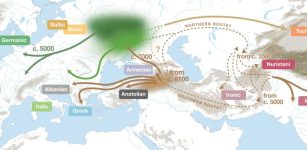 New Insights Into The Dawn Of The Indo-European Languages
Linguistic Discoveries | Jul 27, 2023
New Insights Into The Dawn Of The Indo-European Languages
Linguistic Discoveries | Jul 27, 2023 -
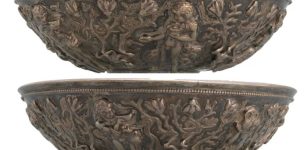 Surprising Discovery Reveals Ancient Tibetan Bowl Shows Alexander The Great – The Jewish Version And Not The Homer’s Iliad
Archaeology | Apr 28, 2022
Surprising Discovery Reveals Ancient Tibetan Bowl Shows Alexander The Great – The Jewish Version And Not The Homer’s Iliad
Archaeology | Apr 28, 2022 -
 Significance Of Secret And Powerful Number 108 That Has Accompanied Humankind For Thousands Of Years
Ancient Symbols | Jun 19, 2017
Significance Of Secret And Powerful Number 108 That Has Accompanied Humankind For Thousands Of Years
Ancient Symbols | Jun 19, 2017 -
 Paleolithic Inhabitants Of Cyprus Established Settlements Much Earlier Than Previously Estimated
Archaeology | May 17, 2024
Paleolithic Inhabitants Of Cyprus Established Settlements Much Earlier Than Previously Estimated
Archaeology | May 17, 2024



